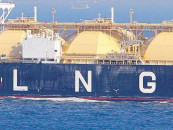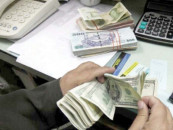SBP dismisses default fears
Governor says Pakistan is facing economic hardship, but situation is under control

Pakistan’s central bank has categorically rejected all the conflicting reports speculating the country is heading towards default on global payments, as a staff-level agreement with the IMF has paved the way for large-scale foreign funding and oil financing from friendly countries.
“Pakistan is not among the most vulnerable countries in the world, so its citizens do not need to panic,” acting State Bank of Pakistan (SBP) Governor Dr Murtaza Syed said in a podcast.
The central bank governor and deputy governor admitted in the podcast that the country was facing economic hardship, but the situation remained under control.
Over the next 12 months, the countries that have taken an IMF programme will be much safer, compared to states like Ghana, Zambia, Tunisia and Angola, which do not have IMF’s support and may face bigger pressures.
“We have completed the current review with the IMF and we have successfully achieved the difficult task of receiving a staff-level agreement, by fulfilling all their requirements,” Syed said.
“Now, it should be much easier for us to get approval from the IMF board to get large-scale funding. We will also get some additional funding and oil financing from friendly countries. So, the Pakistanis should dismiss all economic fears in their minds.”
Pakistan’s economy was recovering well from the Covid impact and achieved high growth of 6% in the past two consecutive fiscal years – FY21 and FY22.
The nation can afford a little bit economic slowdown. In the meantime, the economy’s leadership has started working on adjusting relevant policies in accordance with the strategy.
“We are working on tightening the belt to reduce the economic vulnerability of our nation…interest rates have been increased very proactively by SBP, while other vulnerable countries have not increased their interest-rates,” he said.
Analysing the current vulnerability of the economy, Dr Murtaza Syed stated “as the world is still in the process of overcoming the impact of the Covid-19 pandemic, the next 12 months will be very challenging for the
global economy.
“Record increases are occurring in the international commodity prices and the US Fed is tightening its policies, while all countries are worried about the geopolitical tensions. Emerging markets are facing a sharp rise in inflation, while financial pressures are growing in countries with high debt levels.”
Syed said his optimism was based on three fundamentals including a reasonable debt-to-GDP (gross domestic product) ratio of 70% for Pakistan. “It is not justifiable to categorise Pakistan’s debt-to-GDP ratio with Ghana (80%), Egypt (90%) and Zambia (100%) while Sri Lanka has 120% ratio.”
Moreover, Pakistan’s external debt is 40% of GDP, while Tunisia’s debt stands at 90%, Angola 120% and Zambia
over 150%.
Fortunately, Pakistan is relying more on its domestic debt, which is payable in rupee denomination and is easier to manage as compared to the external loans which are payable in foreign currencies.
Only 7% of Pakistan’s external debt is short term in nature, while other countries have taken much higher short-term external loans, like Turkey (30%).
Pakistan has acquired only 20% of its borrowing on commercial terms, and the rest are concessionary loans, taken from the IMF, World Bank or
friendly countries.
“So, it is easier for us to return these loans and all debt indicators of Pakistan are much better than the countries which have done more commercial borrowing.”
SBP Deputy Governor Dr Inayat Hussain said Pakistan’s foreign exchange (FX) reserves stood at around $9.3 billion, which “is not too good”. “They are working to increase the reserves equal to three months of import cover.”
“However, this (FX) current level is not too low or worrisome for the nation,” he said.
In addition to this, Pakistan also has gold reserves worth around $3.8 billion. “Currently, we are not in a debilitating crisis, so we do not need to pledge these gold reserves. We must not panic. I advise the Pakistanis to reject the fake news reports drawing a doomsday scenario.”
Pakistan’s currency has depreciated sharply, around 18%, since December 2021. However, 12% of the depreciation was caused by the aggressive increase in interest rates by the US Fed to support the US dollar against other
global currencies.
Pressures on Pak rupee were also caused due to rising imports and demand for dollars, while the supply of dollars has remained low due to geopolitical and domestic uncertainties.
“We expect imports to slow down gradually, so this gap in dollar demand and supply will reduce. The foreign exchange market is functioning consistently, while the SBP is vigilantly controlling this market to prevent disruptions or malpractices.”
Published in The Express Tribune, July 26th, 2022.
Like Business on Facebook, follow @TribuneBiz on Twitter to stay informed and join in the conversation.



















COMMENTS
Comments are moderated and generally will be posted if they are on-topic and not abusive.
For more information, please see our Comments FAQ